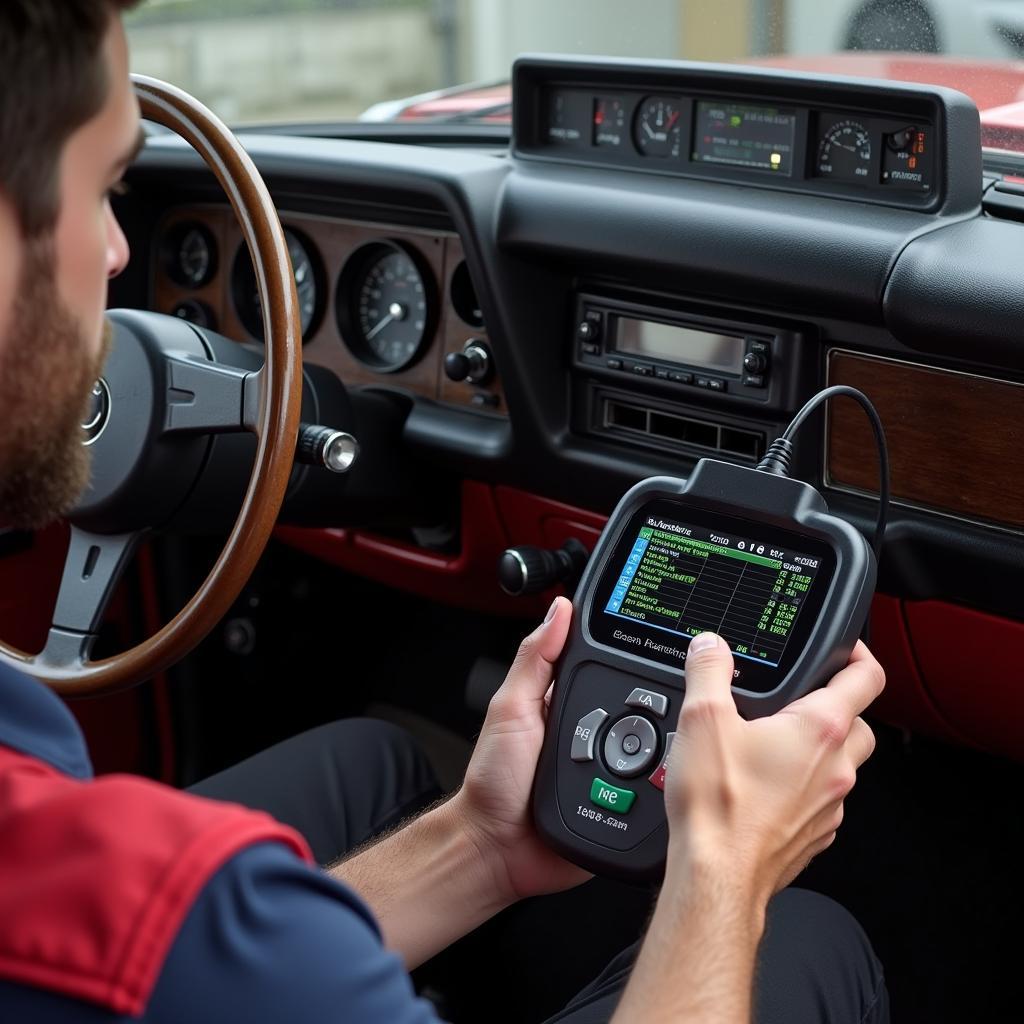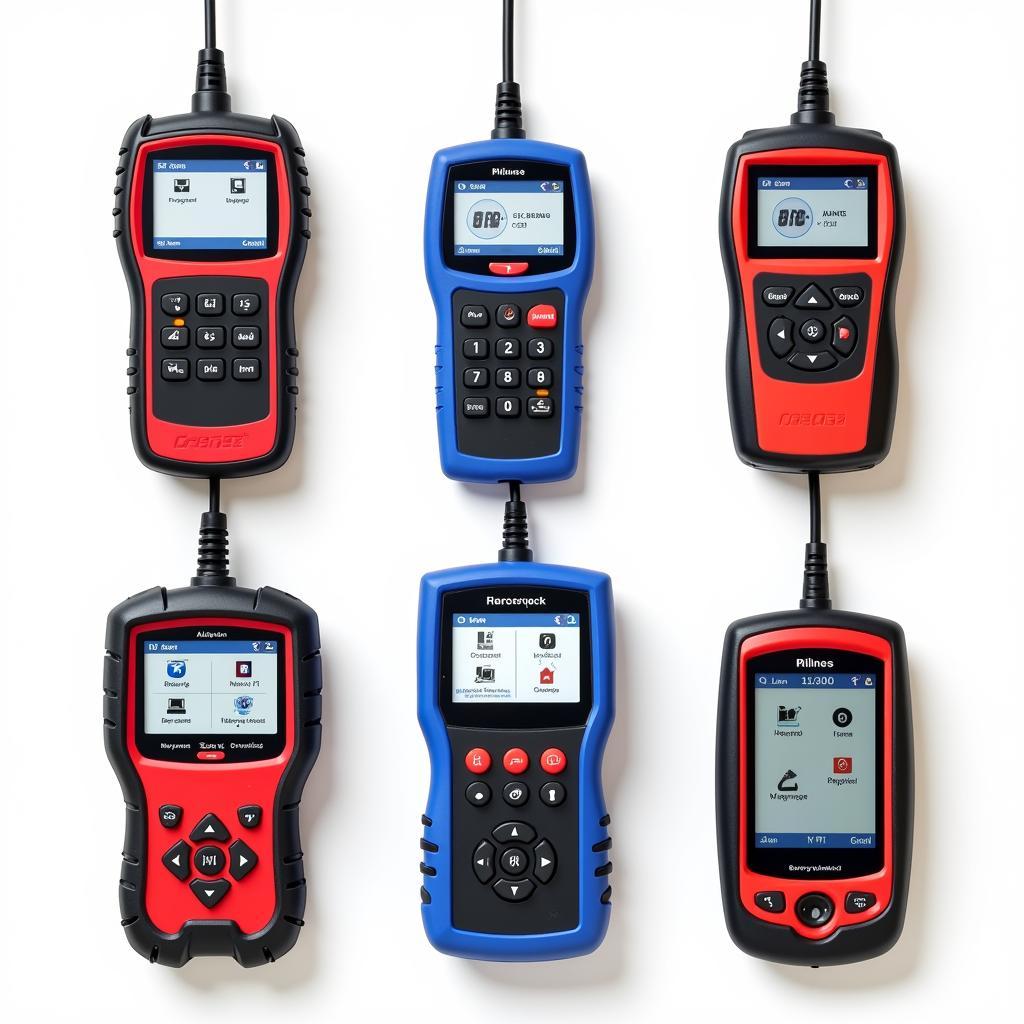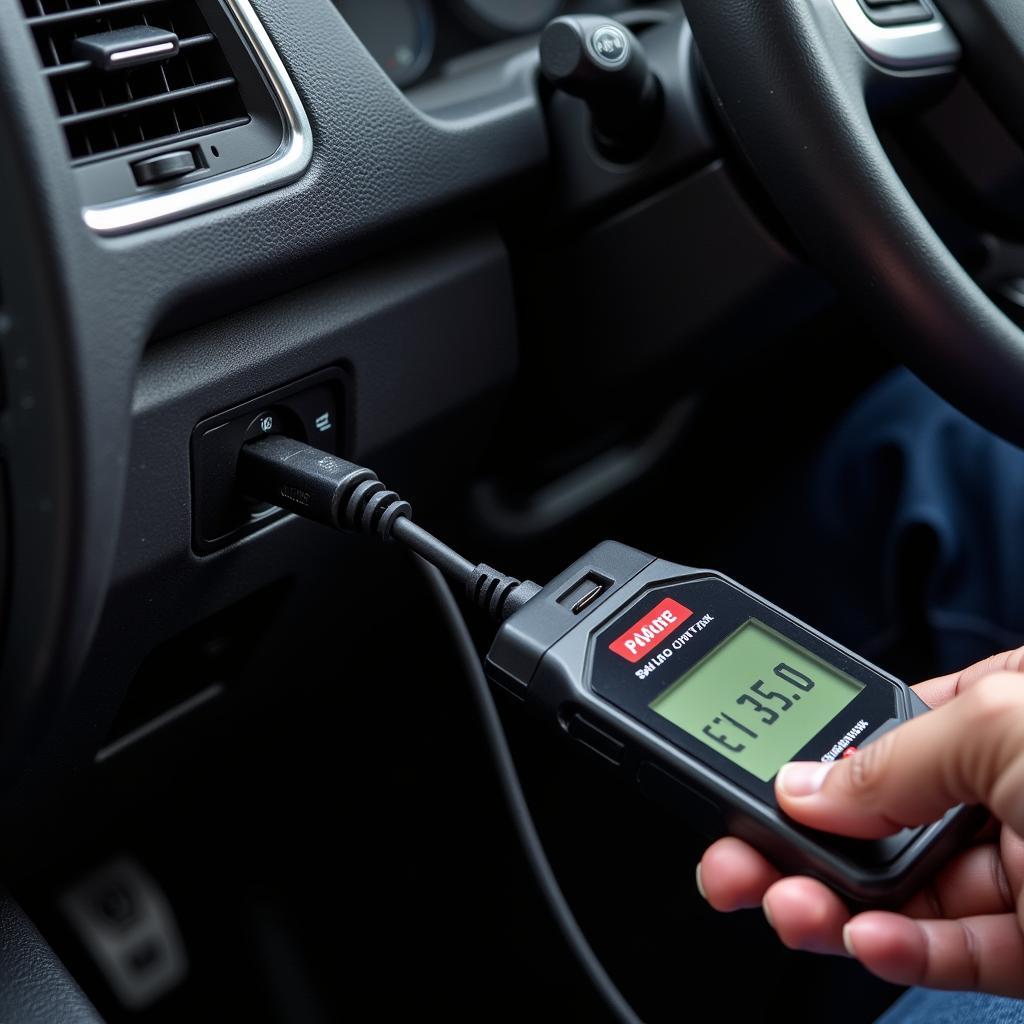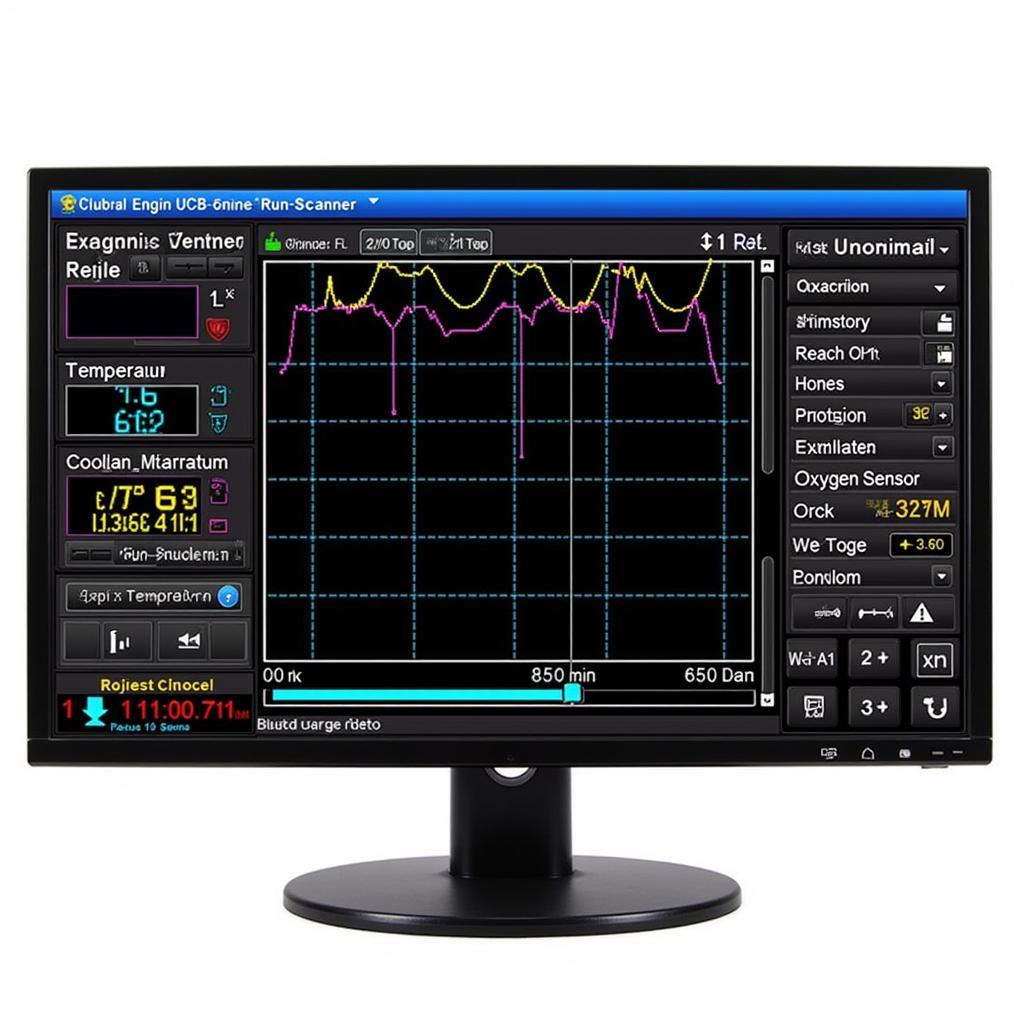Understanding the inner workings of your Dodge vehicle, especially those manufactured between 1981 and 1995, often requires a specialized tool – the OBD1 scan tool. Unlike its modern OBD2 counterpart, the OBD1 system utilizes manufacturer-specific protocols, making a compatible scan tool essential for accurate diagnostics. This comprehensive guide delves into the world of Dodge Obd1 Scan Tools, equipping you with the knowledge to navigate this often-misunderstood system.
Why a Dodge OBD1 Scan Tool is Essential
Before the standardization of On-Board Diagnostics (OBD) systems, manufacturers like Dodge employed proprietary protocols. This means a generic OBD2 scanner won’t suffice for your pre-1996 Dodge. A dedicated Dodge OBD1 scan tool unlocks access to the vehicle’s computer, revealing:
- Stored Trouble Codes: These codes pinpoint specific areas requiring attention, such as engine performance, emissions, or transmission issues.
- Real-Time Data Stream: Observe live sensor readings like engine RPM, coolant temperature, and oxygen sensor voltage – invaluable for diagnosing intermittent problems.
- Component Activation: A Dodge OBD1 scan tool can command certain components to activate, allowing you to test fuel injectors, solenoids, or even the cooling fan.
 Mechanic Using a Dodge OBD1 Scan Tool
Mechanic Using a Dodge OBD1 Scan Tool
Navigating the World of Dodge OBD1 Scan Tools
The market offers various Dodge OBD1 scan tools, each with a unique set of features and capabilities. Let’s break down the common types:
1. Basic Code Readers: As the name suggests, these affordable tools primarily retrieve and clear stored trouble codes. They are ideal for identifying the root cause of a “Check Engine” light.
2. Advanced Scan Tools: These tools offer a broader range of functions, including accessing live data streams, performing component activations, and even conducting system-specific tests.
3. Manufacturer-Specific Tools: Dodge, alongside its affiliated brands like Chrysler and Jeep, utilized specific communication protocols. While some universal scanners cover these protocols, a dedicated Chrysler/Dodge/Jeep (CDR) scan tool might be necessary for certain models and in-depth diagnostics.
Choosing the Right Tool for Your Needs
Selecting the right Dodge OBD1 scan tool depends on your technical expertise and diagnostic requirements.
- DIY Enthusiasts: For basic troubleshooting and code reading, an affordable basic code reader might suffice.
- Home Mechanics: Opt for an advanced scan tool offering live data, component activation, and perhaps ABS or airbag system access.
- Professional Technicians: A high-end manufacturer-specific tool, potentially integrated with a laptop for comprehensive data logging and analysis, is recommended.
 Variety of OBD1 Scanners
Variety of OBD1 Scanners
Dodge OBD1 Scan Tool: A Wise Investment
Investing in a Dodge OBD1 scan tool is investing in your vehicle’s well-being and your peace of mind. Whether you’re a seasoned mechanic or a car enthusiast, a scan tool empowers you to:
- Save Money: Identify problems early, preventing costly repairs down the road.
- Gain Control: Take charge of your vehicle’s maintenance, avoiding unnecessary trips to the mechanic.
- Enhance Your Knowledge: Delve into the intricacies of your Dodge, gaining a deeper understanding of its operation.
Frequently Asked Questions
1. Can I use an OBD2 scanner on my 1994 Dodge Ram?
No, a standard OBD2 scanner won’t work on your 1994 Dodge Ram. Vehicles manufactured before 1996 require an OBD1 scan tool compatible with Dodge’s specific protocols.
2. Where is the OBD1 diagnostic port located on my Dodge?
The OBD1 diagnostic port’s location varies depending on the model year and make. Common locations include under the dashboard, in the engine bay, or near the fuse box. Refer to your vehicle’s owner’s manual for the precise location.
3. Can I clear trouble codes with a Dodge OBD1 scan tool?
Yes, most Dodge OBD1 scan tools allow you to clear stored trouble codes. However, it’s crucial to address the underlying issue that triggered the code in the first place. Simply clearing the code without resolving the problem could lead to further damage or recurring issues.
4. What are some common Dodge OBD1 trouble codes?
Some common Dodge OBD1 trouble codes include:
- Code 12: Direct battery input to PCM was interrupted within the last 50 ignition key-on cycles.
- Code 13: No change in oxygen sensor signal detected (oxygen sensor fault)
- Code 22: Coolant temperature sensor input above or below acceptable voltage
5. Where can I get help interpreting Dodge OBD1 trouble codes?
Numerous online resources, forums, and even your vehicle’s repair manual provide detailed explanations of Dodge OBD1 trouble codes. Additionally, qualified mechanics specializing in older Dodge vehicles can assist with diagnosis and repair.
Need Expert Assistance?
For top-notch diagnostic tools and expert advice on all things OBD1, contact the team at ScanToolUS.
Call us: +1 (641) 206-8880
Visit us: 1615 S Laramie Ave, Cicero, IL 60804, USA
Understanding and utilizing a Dodge OBD1 scan tool is an invaluable skill for any Dodge owner. By unlocking the secrets hidden within your vehicle’s computer, you can diagnose issues accurately, perform DIY repairs, and keep your Dodge running smoothly for years to come.



Pingback: Dodge Diagnostic Scan Tool: The Ultimate Guide to Troubleshooting Your Vehicle - Car Scan Tool